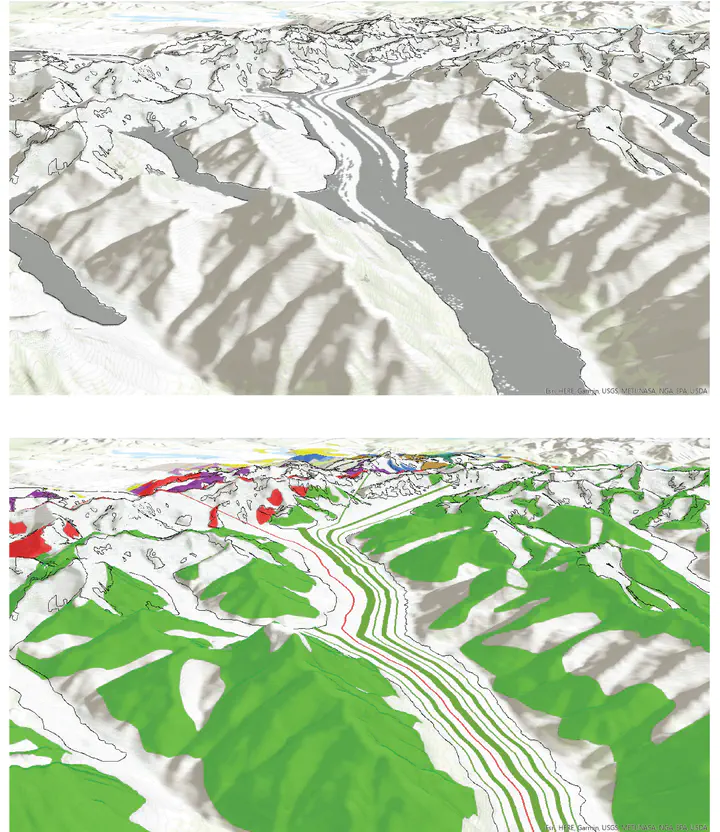Combining Bedrock Geology and a New Glacier Flowline Tool to Model Debris Cover Evolution (C12B-0572)
 Johnson Glacier, Eastern Alaska Range
Johnson Glacier, Eastern Alaska RangeAbstract
Recent advances in glaciology have produced globally complete maps of glaciers, supraglacial debris cover, and debris cover thickness. These advances have established the importance of accounting for the melt-suppressing effect of rock debris when solving for glacier-sourced sea level rise. The next critical unknown is predicting how supraglacial debris cover will evolve in the future. To help address this unknown in a framework that scales globally, I have developed a new tool that uses geometric arguments alone to automatically derive a set of flowlines for each glacier. A machine learning model, trained on present day debris cover with bedrock geology and topography as input data, informs the erosive potential at the up-glacier provenance of each flowline which can in turn be used to populate, and then laterally evolve, debris cover along each flowline. Once fully trained, this approach will rely on only two effectively stable properties, bedrock geology and topography, and any prescribed glacier extent. The independence from measured or modeled ice dynamics means input can be a paleo ice sheet, a future ice extent or a pile of snow in your backyard. The intention of this method is to arrive at a computationally cheap prediction of past or future debris cover extent while accounting for complex glacier geometries and explicitly predicting medial moraines. This method is being developed in an annotated, open-source Jupyter notebook and high-density glacier flowlines derived for this work may have other applications in glaciology.